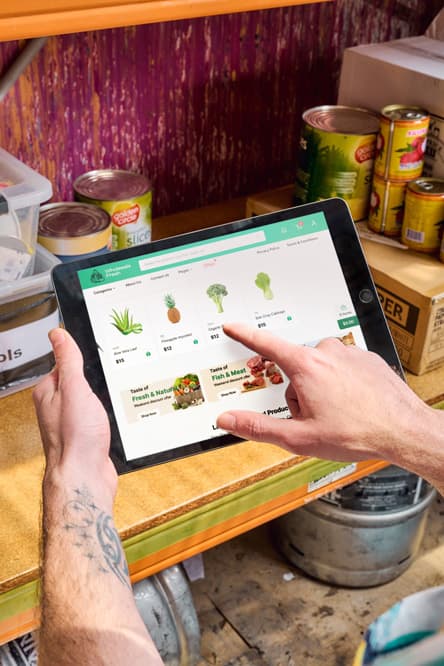
- Business Growth & Optimisation
How to Cure the 6 Major Causes of Poor Cash Flow
Learn the main levers you can pull to improve cash flow.
Cash flow is a common source of stress in the merchant community. According to ABS figures, 48% of small Australian businesses have less than 3 months’ of cash on hand to cover operations, based on their business’ current level of revenue and expenditure. A further 12% can’t accurately estimate the funds currently held by the business.
Understanding which levers to pull to get more cash in, or to reduce cash out, is critical to the success of your business. While a healthy cash flow can create opportunities for expansion, poor cash flow will not only restrict your ability to grow — it will also add significant stress to business operations and remove that crucial buffer during quiet periods.
Cash flow stress is extremely common
Getting a handle on your cash flow is critical to ensure the long-term survival of your business. Without an accurate understanding of the amount of money flowing in to (and out of) your business, it’s impossible to know whether your business is a success. Yet it’s something many business owners struggle with.
More than a third of Australian business owners are forced to dip into their personal savings as a result of poor cash flow, impacting their ability to meet their own living costs. This has a knock-on effect on the broader economy; almost half a million small-to-medium size business owners admit that if their cash flow was in a more healthy state, they would employ more workers — in turn opening up approximately 500,000 jobs across small businesses in Australia.
Unfortunately, the reality is that poor cash flow is the cause of up to 40% of business failures. This dire statistic is evidence of the fact that neglecting it can have a serious impact on your business’ future growth. However, if you keep a watchful eye over your business’ cash flow, and mitigate any risks that could impact it, you’ll have funds ready for when it’s time to take your business into its next stage of growth.
To help keep your business' cash flow running smoothly, here are the major causes of an unhealthy cash flow and how to cure them.
6 factors that impact your cash flow and how to manage them
1. Stock uncertainty
Businesses have to straddle the fine line between too much inventory, and too little.
On the one hand, storing excess stock can be a real problem. You’ve footed the cost of acquiring goods, without reaping the rewards of selling them. Also consider the fact you’ve got to rent (or buy) a place to store that excess stock, and potentially increase your insurance threshold beyond where it needs to be. Holding on to excess stock is a costly mistake.
On the other hand, running out of stock leads to lost sales, reduced customer satisfaction and lower loyalty levels. Customers often feel let down when you can’t meet their needs due to a stockout.
This is where a point-of-sale system that tracks your inventory in real-time is key. Monthly, or even weekly, manual stock counts leave room for human error. Plus, they take up valuable time — and will be inaccurate the moment you make a sale.
With total transparency of your stock, you’re able to modify your purchase orders to coincide with higher cash flow periods, quickly identify inventory issues, and ensure every customer leaves your store with the product they intended to purchase.
2. Tax costs
Staying on top of your tax commitments is a simple way to avoid unnecessary interest payments, penalties, and time-consuming audits. Investing in accounting software will help you avoid missing the crucial deadlines that would see you incur them.
This is where it pays to do your research when looking for the right accounting tools for your business. However, accounting software is just one of the essential tools for running a business. Remember also to regularly check your Zeller Dashboard, which will tell you in real-time the amount of tax payable for any given month.
3. Late payments
You can waste a lot of time chasing up late invoices — and most businesses do, because in Australia they’re paid an average of 10 days late. For small businesses, that time delay bloats to 25.5 days. If you invoice customers, your business is likely losing a lot of financial freedom to delayed payments.
Having an invoicing software that helps you get your invoices created and in front of your clients as soon as possible is essential. Zeller Invoices is an all-in-one solution that helps build and send your invoices via email or SMS and allows your customers to pay online. The simpler the process, the quicker the payment.
Another option to minimise the cost of delayed payments is to implement shorter payment terms. Ensure to include clearly defined conditions for payments to make it clear that late payments are considered a breach of contract.
Alternatively, you could consider invoice factoring, a financial service that converts outstanding invoices due within the next 90 days into immediate cash. This money can help you stay afloat in the short term, providing the cash needed to pay your staff and expenses. However, it’s always important to assess the pros and cons of debt factoring. While it may seem an appealing option now, the interest charged can have costly future ramifications. There are many other options available to improve your cash flow, which will not eat into business profits.
The only way to put an end to late payments entirely is to take payment immediately. For that, you need a mobile EFTPOS terminal that can go wherever the job takes you, as well as accept over-the-phone payments. Read more about the benefits of having a mobile EFTPOS terminal.
4. High overheads
Running a business can be expensive. There are a number of operational costs — such as rent, utilities and software costs — which can eat into your monthly cash flow. This is particularly true if you’re locked into long-term contracts with hidden fees, which can quickly add up.
This is where it pays to regularly review your business expenses, and check for opportunities to cut costs. Whether it’s switching energy providers, reducing staffing levels, or making the move to an EFTPOS terminal with clear pricing and no hidden fees, there are business savings to be had.
Passing your EFTPOS transaction fee onto your customer through surcharging – also known as zero-cost EFTPOS – is an increasingly popular cost-saving measure for business owners. Learn whether surcharging is right for your business.
5. Slim margins
Operating on a thin profit margin can be an effective strategy for businesses just entering the market. Low prices are a strong point of appeal for shoppers, who may then be willing to abandon a competitor and become a long-term customer. However, slim margins will impact long-term business success by pushing the opportunity to grow your business back further into the future.
Make sure you’re aware of the all-inclusive cost of delivering each product or service. This understanding of the true cost of your offering will be crucial in your quest to get the price right. Once you’re aware of that cost, identify the weak points in your profit margins and consider either raising your prices, or dropping the least profitable product or service altogether. Learn how to choose the right pricing strategy for your business.
6. Loan interest
The pressure of paying staff, keeping on top of bills, and planning for costly overheads can make interest-heavy loans feel like your only option. However, for many businesses, loans can do more harm than good in the long run. It's essential to carefully assess your financial situation and explore alternative strategies, such as cost-cutting measures and revenue optimisation, before committing to a loan. Rushing into debt may exacerbate financial difficulties rather than alleviate them.
An all-in-one solution like Zeller can help you avoid these high-pressure situations by giving you faster access to your funds. Invoices can be generated at speed, and payments taken via Zeller Terminal are swept to your free Zeller Transaction Account nightly, and available for spending using your Zeller Debit Card the very next day. Plus, Zeller Dashboard gives you a bird’s eye view over your day’s takings in real-time, and enables you to easily compare business performance over different periods — helping you plan ahead for quiet periods.
Now that you’re aware of the importance of maintaining a healthy cash flow, it’s time to create your cash flow forecast.
Want more valuable insights, delivered straight to your inbox? Sign up to our Business Blog.

Take control of your payments
Zeller is an all-in-one solution to help you get paid, and put your takings to work, faster.



